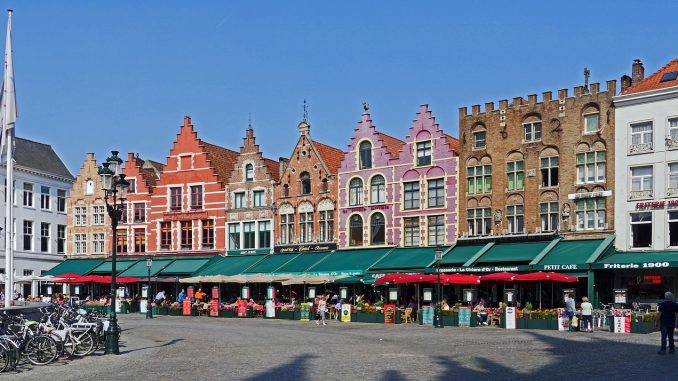
The Markt (Market Square) of Bruges, the largest city and capital of the province of West Flanders in the Flemish Region of Belgium, is located right in the heart of the city and covers an area of just about 1 hectare (2.5 acres). Since the twelfth century the strategic location of Bruges made it an important location for trade, both between those to the north and those to the south, but This square has been used as a marketplace since 958, and a weekly market has been held here since 985. With spices coming from Portugal and cloth from France, the market has a long and storied history of economic exchange. Foreign merchants have been numerous and welcomed in Bruges since the 13th century, and after the Castilian wool monopoly ended there has been a thriving trade in woven materials from the region. The protection of the Counts of Flanders and the city itself made it a safe place to sell wares and store funds acquired from the trading of goods.
The square includes a 12th-century belfry, Cloth Hall, and the neo-Gothic Provincial Court building 1887. The center of the market features a statue of Jan Breydel a butcher, and Pieter de Coninck a weaver, that in May of 1302 led the Matins of Bruges attack on the castle of Male and resulted in the complete annihilation of the French garrison.
The Markt Facts
- Wednesday is market day and the stalls sell varieties of fresh fruits, vegetables, flowers, meats, and cheese.
- Jan Breydel and Pieter de Coninck are often portrayed as patriotic heroes in Belgium due to their passion for Flemish identity.
- Three to four million tourists visit the markt each year.
- One of the main features of the Markt is the Belfort, an 83-meter high belfry that looks out over the entire square.
- The Markt was completely renovated in 1995 and today is very different than it was in the times of the Counts of Flanders.
- The canals that run alongside the square were historically used to bring goods to and from the markt where they were moved through the covered warehouse known as the waterhalle.